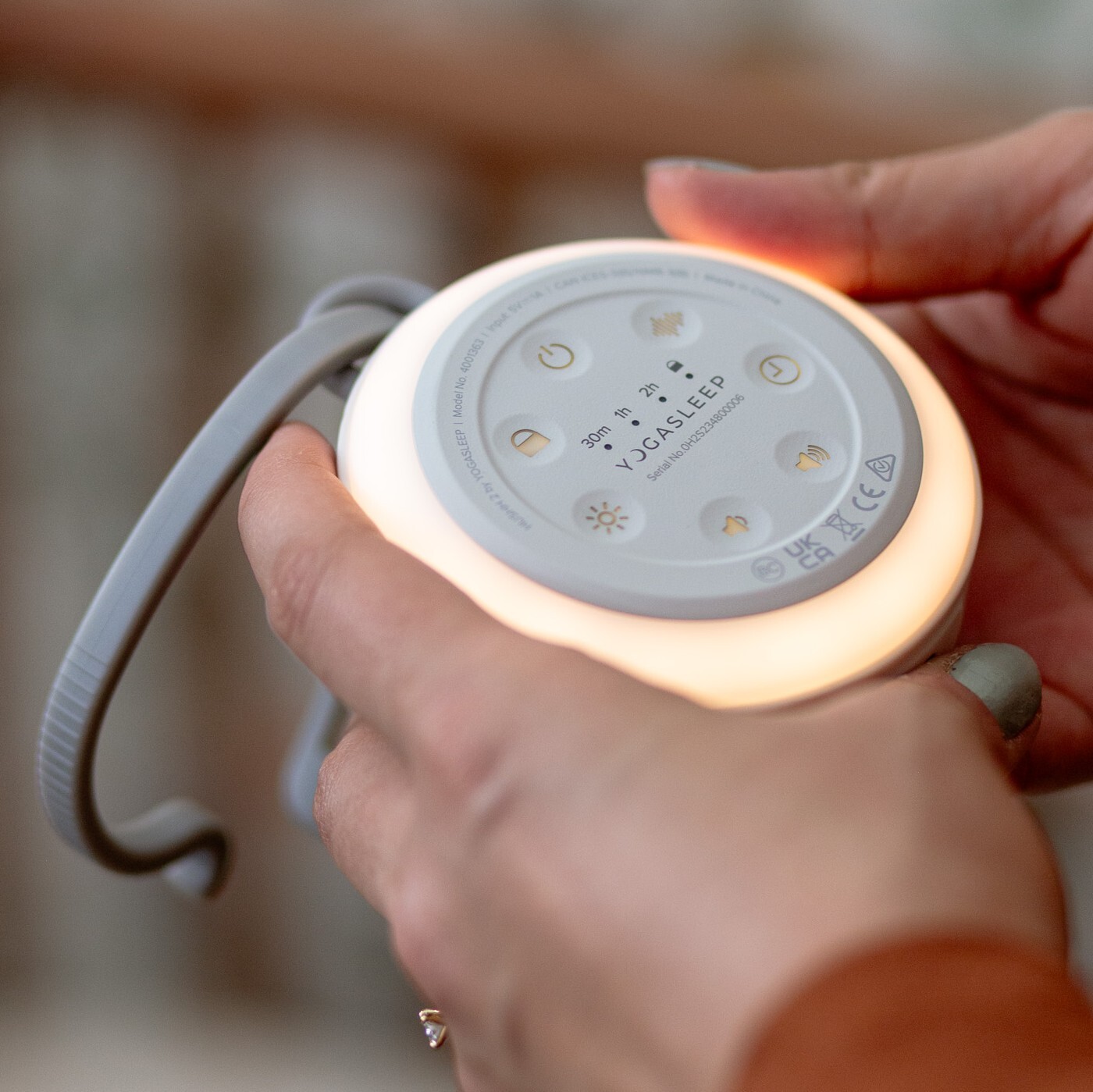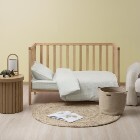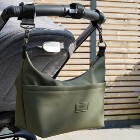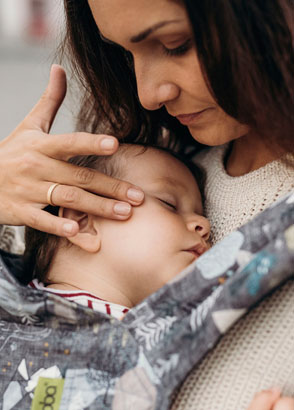The Toddler Sleep Problem:
My son's sleeping started to go downhill at about 4 months of age. At this stage he had previously been a great sleeper who slept consistently through the night since eight weeks of age. He enjoyed being wrapped, refused a dummy, but would self settle easily.
Between four and six months he began to wake at 45 minutes during every day sleep. This battle continued until he was seven months. After trying numerous sleep programs, controlled crying etc, I moved him into his stroller for his day sleeps. His day sleeping changed and he would have two long sleeps, often still stirring but resettled with rocking and ‘sshhing’ or a firm “sleepy time now” from Mum.
He is now 22 months. My main issue with him is his early morning waking, and waking in the night (and sometimes not self settling) also ideally I would like him to move out of his stroller for day sleeping.
Currently a typical day is as follows:
5 - 5.40am Wakes – screams and will not go back to sleep although he is still very tired (things we have tried : rocking in buggy, bottle, toys in cot, black out curtains, going to bed later, coming into bed with us, leaving to cry
6am Bottle
7am Breakfast
8 – 9am Sleep – is so tired from the early start is desperate for a sleep (goes into buggy – will often sleep for 1 ½ - 2 hours, requiring rocking when stirring)
11am Lunch
2pm – 3pm Sleep – requires another sleep as is very tired and will not last until bed time (have tried only giving one sleep during the day, makes no difference to the early morning waking and behaviour is unbearable, have also tried putting him down later in the evening, but seems to make no difference)
5pm Dinner
6pm Bath
7 – 8pm Bed
During the night: can often stir at 9.30pm, 11pm, and once in the early morning, usually is able to resettle himself, but some nights will put up a fight and not go back to sleep. In these instances out of desperation we have tried the buggy, into bed with us, leaving him to cry for up to 1 hour etc
Recently he indicated he wanted to go into a bed and has made a good transition usually going to sleep quite quickly and on his own. If he wakes in the night to date we have been semi successful in getting him to go back to sleep but it is never guaranteed. However the early morning waking remains and he starts the day very tired and grizzly. As mentioned previously I would also ideally like to transition him to the bed for his day sleep as I am a little tired of rocking him to sleep but am apprehensive that his sleep will be cut short due to waking early and not being able to resettle himself.
Our recommended Toddler Sleep Solution
- It sounds like there are a few key areas to work on, and once you have decided on a plan of attack, your toddler's sleep will quickly improve.
The main thing to work on is consistency – so regardless of the time he wakes in the night, you are consistent with expecting him to go back to sleep in his own bed. He is old enough to understand what you expect, so you need to be firm, consistent and decide on a course of action you will both be happy with.
For starters, make sure you close your bedroom door and your toddler's door, so you aren’t woken by any grizzling or general sleeping noises. If you have been using a baby monitor, turn it off!!!
Then it sounds to me like the key areas that may help you are: - Rocking & Mum association
- Routine
- Positive sleep associations
- Self-settling techniques
1. Rocking & Mum association:
From your information, it sounds like your toddler has a strong association between rocking and sleeping, meaning he thinks he needs to be rocked to fall asleep. So when he wakes in the night, he is looking for the rocking, or at least a cuddle, to fall back to sleep.
By continuing to rock him in the buggy for his day sleeps, you are reinforcing this association. And when you take him into your bed during the night, you reinforce him thinking he needs you with him to fall back to sleep.
Given that he sometimes settles during the night without needing you, it shows he can self-settle. You just need to work on always getting him to do that!
I would work on teaching him to gradually self settle for his day sleeps first. You can continue with him sleeping in the buggy in the meantime, but gradually you need him to fall asleep without any rocking. Just work on each day leaving him a little more awake when you leave him for his sleep. Also introduce positive sleep associations, see below, that can transfer to the cot. Once he can settle in the day in his buggy without any rocking or ssshing, he should be able to settle in his cot for his day sleeps.
If he is already settling by himself at bedtime, once he is also settling himself in the day, his night sleeping should also improve. However if you are lying with him or patting him etc to get him to fall asleep, you will need to gradually remove yourself from doing that too.
2. Routine:
This is absolutely key to getting a toddler to sleep well. Babies of his age need to know what you expect and when you expect it. An effective routine will also make your days much easier, as you can plan when to go out, know when to have him into bed, and ensure he has his meals and sleeps at the times that are most helpful with his night sleeping.
Routines are harder to get just right for a toddler of his age than a younger baby, but I would recommend you do change what you are doing now.
Firstly, I would move everything back to later in the day. Move his bottle to 7am, breakfast to 8am. Just do this gradually, such as moving your current times back by 10 minutes a day and he should start to sleep in a bit longer.
He needs about 13-14 hours of sleep a day. So if he is having 3 hours napping a day, this is going to impact on how much sleep he needs at night. By having his morning sleep so early, you are effectively reinforcing his early waking. Once you have moved his bottle and breakfast back, and as well as the other changes below, I would work on moving his morning sleep back. Again just do it gradually, say 10 minutes per day. Once he is going for his morning sleep late morning, he will not likely need an afternoon sleep. But just move the morning sleep back slowly, and watch for tired signs in the afternoon to see if he needs a quick nap.
Make sure he is in bed asleep, by 7pm. Any later and this can effect both how tired he is and also how early he wakes. While it seems logical that going to bed later would help him sleep in, the opposite is actually true. The earlier he is to bed, the more settled he will sleep and the later he should sleep in the morning.
If you need further information on routines, Save our Sleep is excellent.
3. Positive sleep associations
You can help your toddler sleep better and settle by himself by introducing some positive associations. Basically these are things he sees/hears/feels that tells him it’s time to sleep (and stay asleep). These sleep associations are positive as they don’t need Mum to help him fall asleep, which is the difference to his current associations that need you there.
Positive sleep associations can help with falling asleep at bedtimes, settling in the night and also sleeping in unfamiliar environments. It helps if your sleep associations are portable, so you can take them on holiday, to daycare or out when you are shopping etc!
The best ones for toddlers are:
White Noise –Try leaving white noise on during the night. Introduce it for all sleeps and leave it on for the duration of the sleep. It's a good sleep association, but also helps to blockout backgroun noises.
Sleeping bag – the process of getting zipped into a sleeping bag every time you sleep quickly forms a clear message to toddlers it’s time to sleep. It also fixes the problem of your toddler waking from cold, as you don’t need to use any blankets. Make sure you use your sleeping bag for all sleeps. (I always take mine when I am out, so Tom has sleeps in the pushchair etc in his sleeping bag). The best option for you would be a Woolbabe Bag, as the toddler size will last you up to age 4 and they can be used in pushchairs. This would mean you can get your toddler used to it while you are reducing the rocking in his pushchair, then continue using it once he is sleeping in his bed in the day. There are also cotton or quilted options that cover size 18-36 months.
Comfort blankie – A little blankie or special toy is a great association with sleeping, and is great because you can take it anywhere. You can introduce a comforter once your baby is 7 months all. At his age, I would let him look at the pictures to choose one. My favourite is Cuski. You can get him attached to one by getting it to smell like you (put it up your top for a few hours/overnight) and I recommend only letting him have it at sleep times.
4. Self settling / sleep books:
If you would like more information on how to gradually help baby learn to sleep without any rocking or needing you there, the best option is the fabulous book ‘The No Cry Sleep Solution for Toddlers & Preschoolers’ – this covers early waking, needing a parent there to fall asleep, night-waking and visits to the parents' bed etc. I’ve used it with my toddler, and the techniques are very simple and effective.
As I said above, consistency is essential. You need to teach him to fall asleep in his bed for all sleeps, and not have him in your bed. You also need to decide what time of the day the day starts, and I would recommend you treat any waking before about 6.30am as night-waking and resettle him using the techniques in the No Cry book.
























